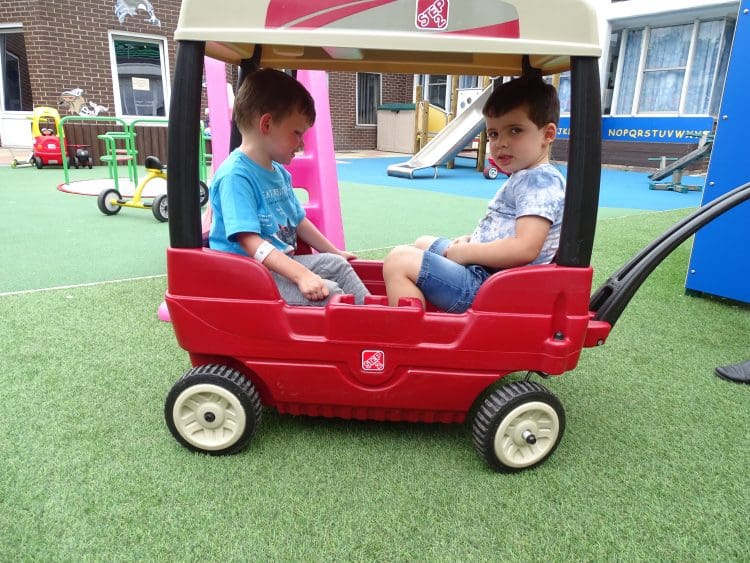The Children’s Accident and Emergency Department at Calderdale Royal Hospital sees around 16,000 children a year who are sick or injured and need emergency care. Visiting A&E may be scary and confusing for children, but having a calming and welcoming area to wait in can help to alleviate worries and stress. The team at Royal Calderdale want to upgrade their existing waiting room to a bright, spacious area with sensory wall panels and an LED projector to create soothing lighting effects. The equipment should last at least 15 years, benefiting many thousands of children visiting the A&E unit each year.
Donate now
More Projects
Stepping Hill Hospital – Play Area for Radiology Department
We are working with the Radiology Department at Stepping Hill to provide toys and games to reduce stress and anxiety in children waiting for treatment. Hospitals can be frightening places for children. When a child is anxious or distressed, it is harder for medical staff to treat them and it can affect the child’s health […]
Find out more →Stepping Hill Children’s Emergency Department – Toys for Distraction
The new Children’s Emergency Department at Stepping Hill Hospital is in need of toys and activities to distract and calm the 25,000 children that they treat each year. The department sees children from 0-15 suffering from a variety of medical and surgical conditions, injuries and mental health crisis. Children attending the Emergency Department (ED) can […]
Find out more →Macclesfield District General Hospital – Phototherapy Units
The Neonatal Unit at Macclesfield District General Hospital cares for babies from across the East Cheshire area. Many of these will suffer from Jaundice as it is very common in new born babies. The treatment for jaundice is by phototherapy which alters the bilirubin in the body allowing it to be excreted. A preterm or […]
Find out more →“The new outdoor area will boost mood and morale, creating social opportunities in a safe space free from medical interventions and providing distraction from pain and illness. It offers play opportunities for siblings too, helping to normalise the hospital environment and bridge the gap between home and hospital.”
Gillian Heer
Starlight Children’s Unit Manager
Wythenshawe Hospital









